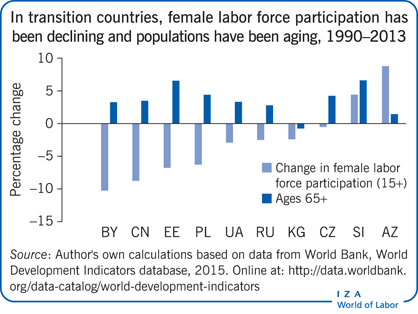Elevator pitch
Increasing women’s labor force participation is important to sustainable economic development, especially in economies with highly educated women and an aging population. Women’s participation varies across transition countries, driven by such economic and social factors as traditional views of gender roles and limited government support for caregivers. Still, in all countries there is clear scope for policies aimed at increasing women’s participation. In particular, in countries where women’s educational attainment is already high, policies to support a better work−life balance and female entrepreneurship look particularly promising.

Key findings
Pros
The female labor force in transition countries is highly educated.
Low fertility rates are making it easier for women to join the labor force.
Increasing female labor force participation has the potential to partially offset the negative economic consequences of aging populations.
More flexible labor market arrangements can increase female labor force participation.
Increased female entrepreneurship can lead to higher female labor force participation directly and indirectly and in the short and long term.
Cons
Female labor force participation in transition countries is still impeded by traditional views on gender roles and occupational segregation by gender.
Limited government support for caregivers is exacerbating the trade-off between having children and working.
Population aging is likely to reduce female labor force participation.
Limited flexibility in the labor market makes it harder for women to work.
Women wishing to become entrepreneurs still face substantially larger obstacles than men.